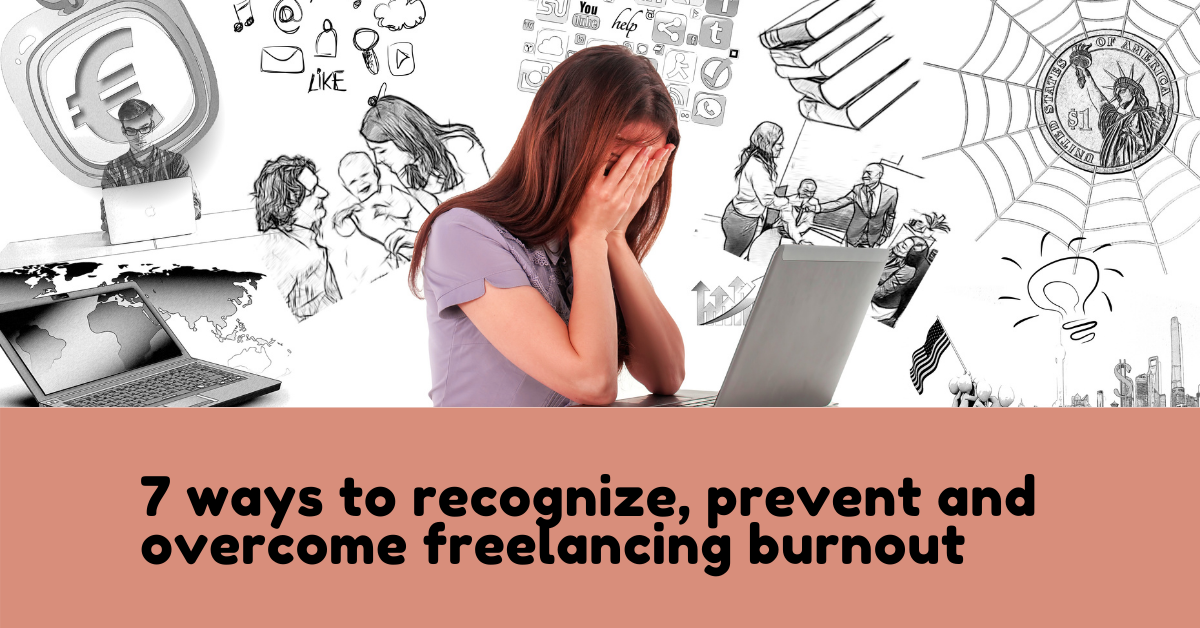As a freelancer, who is responsible for telling you to take some time off to recharge your batteries? Your partner? Your parents? Your clients? No. It’s down to you. Only you know your limits and what you can manage on a daily and weekly basis, so you need to take responsibility for your work schedule and protect yourself from burnout. But how do you do it? Surely it’s easier said than done?
While it can be tough to know your limits and turn down work as a freelancer, it’s absolutely vital that you don’t take on too much and put yourself under enormous pressure. This goes against the whole point of becoming a freelancer in the first place! Here are seven simple ways to recognize, prevent, and overcome freelancing burnout, so you can actually enjoy the self-employed lifestyle!
Track your time and know your limits.
However you do it, you need to track your time as a freelancer. Whether you clock in and out on a homemade spreadsheet or manage your time on an app like Clockify, you need to keep track of how many hours each week you spend on your work. Rolling out of bed and flipping open your laptop, and getting through your projects until they’re finished every day isn’t sustainable. You need to clearly tell yourself how many hours you’re prepared to work each day and track them to make sure you’re not overdoing things.
Relax your deadlines by expanding your delivery timeframes.
Working to deadlines is something that all freelancers need to get used to, regardless of the type of work that you do. If you begin your freelancing career by offering a one or two-day turnaround on your deliveries, don’t forget to increase your delivery timeframes as you take on more clients. If a client approaches you and asks for their project delivered within 24 hours and you already have a full diary, it’s okay to say no! Don’t put yourself under unnecessary pressure by taking on work for people that you will struggle to deliver.
When working from home, set a designated workspace.
If you work from home and don’t go out to a shared office space or public place to do your work, make sure you designate a specific part of your home to be your ‘office.’ This doesn’t have to be anywhere fancy or purpose-built, but it does have to be somewhere specific. It needs to be a place where you go to do your work. The rest of your home should be a place to relax and enjoy time with family and friends. If you don’t designate a home workspace, you might feel like you should work anywhere at any time, which is an extremely unhealthy mindset to have as a freelancer.
Lay some ground rules and hold yourself to account.
Just because you don’t have a boss to tell you what to do, it doesn’t mean you don’t need a framework within which to work. The best way to do this is to set yourself some ground rules that you religiously stick to, so you don’t fall into the trap of working every waking second. Consider some of the following examples as a good place to begin:
- I don’t ever work on Sundays [or any day/s of your choosing].
- My working hours are between 8 am and 2 pm [or any hours of your choosing].
- I don’t open emails or work notifications when the kids come home from school.
- When I’m on vacation, I set my out-of-office on and tell all of my clients that I’m unreachable for the duration of my break.
If you’re not specific about your work pattern and schedule, it’s hard to realize when you’re doing too much. Laying some ground rules and actually holding yourself to account is an effective way of ensuring you don’t burn yourself out.
Establish a working pattern.
One of the things that freelancers enjoy the most about the self-employed lifestyle is that you can set your own hours and work at your own pace. While this is true, don’t mistake this for not having to establish a work pattern. If you don’t know when you’re going to work, it’s impossible to plan the rest of your life. While you don’t have to work from 9-5, Monday-Friday, you do need to establish a working pattern that works for you. While it’s okay to move things around when you have plans, the stricter you can be with your work schedule, the less chance you have of burning yourself out.
Schedule ‘out-of-office’ when you begin to get stressed.
Even if you don’t actually work in an office [which most freelancers don’t, of course], you need to make the most of ‘out-of-office’ settings. All email platforms have them, so make use of them when you need to. If you feel like you can’t take on any more work, or are getting to the stage where you’re getting stressed about upcoming deadlines, simply turn your out-of-office message on and inform your clients that you can’t be contacted for a few days. It helps to stop the flow of new work coming in all at the same time and gives you a chance to catch up with yourself.
Treat yourself.
This is the most important tip of the lot. Make sure you treat yourself to things you enjoy doing. Whether it’s a meal out with your partner or a weekend trip to the beach with the kids, plan time away from your desk with the people that matter to you the most. There’s no better therapy than doing things you love with the people you love, so make sure you plan in advance and do things that bring you joy. If you’re feeling totally exhausted, plan an extended break and treat yourself to some pampering! After all, you’ve earned it and deserve a rest as much as anybody else!
Closing thoughts.
Freelancing is a wonderfully liberating way to earn money and live your life. However, if you don’t take steps to manage your workload, you can easily find yourself taking on too many projects and burning yourself out. Hopefully, these seven tips will show you that there are many ways you can take control of your life as a freelancer and ensure you only take on work that you’re comfortable with.
Do you have any other tips you can share with our community about how you recharge your batteries as a freelancer? If so, drop a comment below and tell us how you practice self-love.

